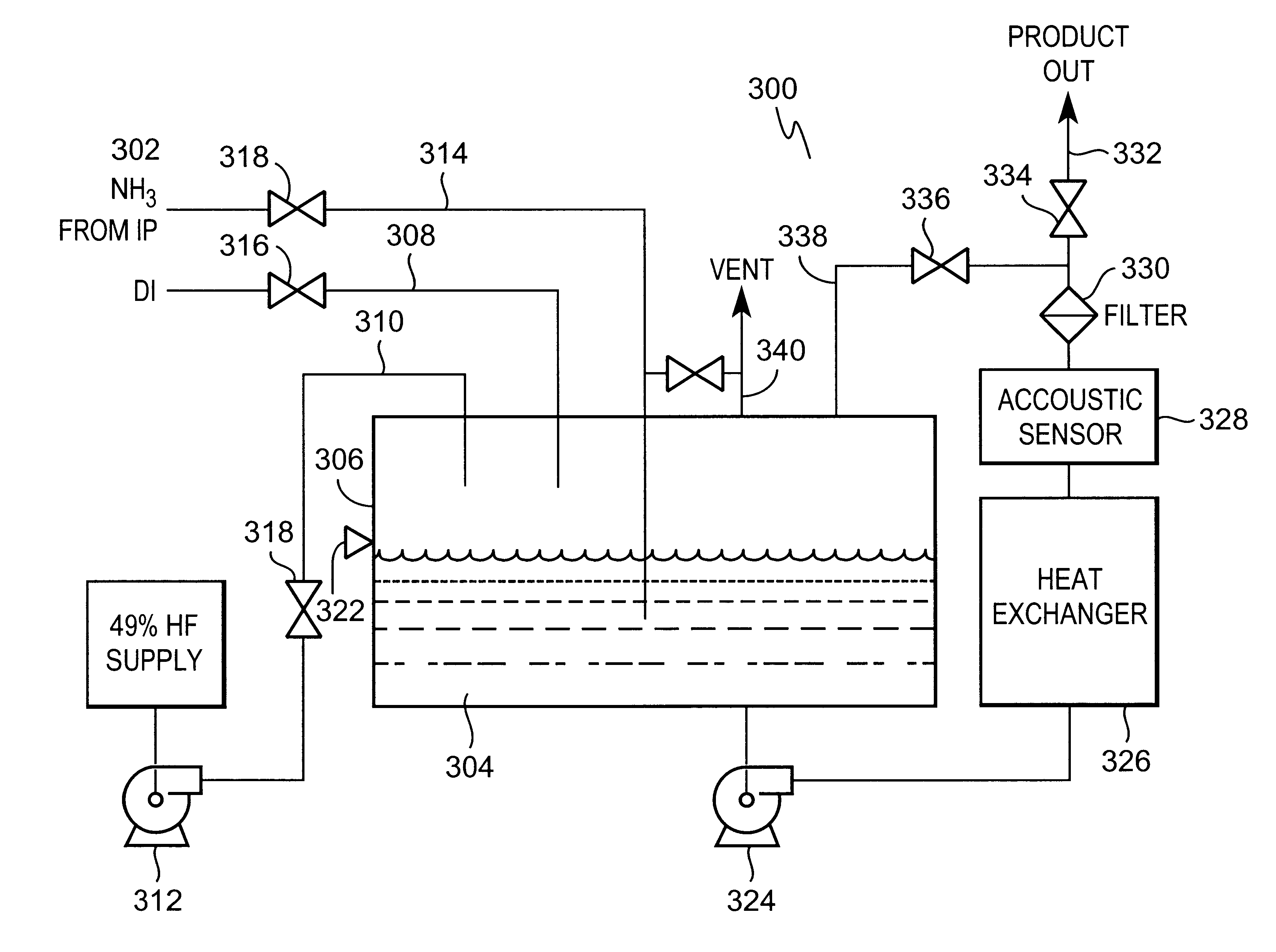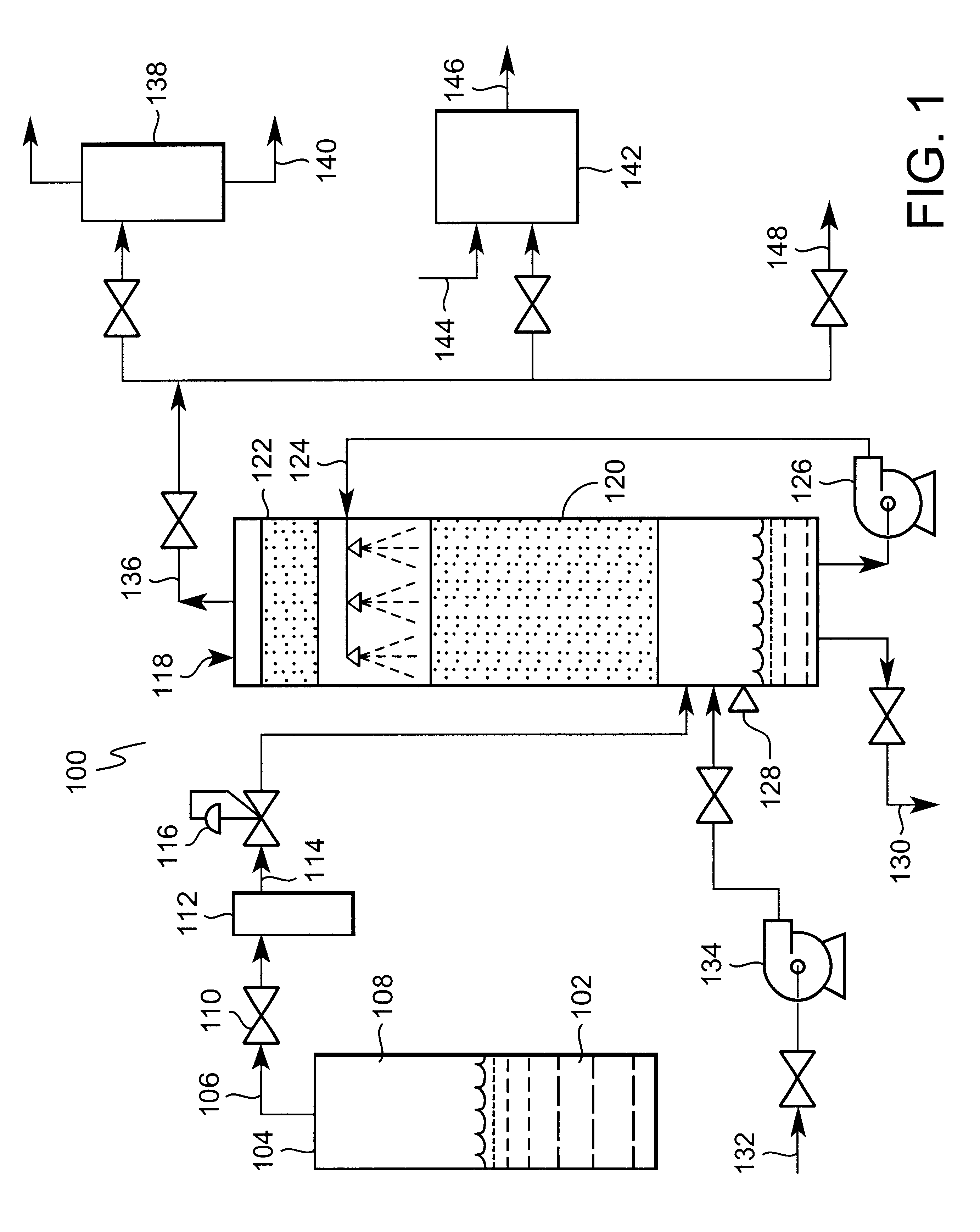On-site generation of ultra-high-purity buffered-HF and ammonium fluoride
a buffered hf and ammonium fluoride technology, applied in the field of onsite generation of ultra-high-purity buffered hf and ammonium fluoride, can solve the problems of insufficient use in cleanup processes, unsatisfactory cleanup process, and high cost of a new ic wafer fabrication facility, so as to improve device characteristics, avoid chemical handling, and reduce the effect of impurity level
- Summary
- Abstract
- Description
- Claims
- Application Information
AI Technical Summary
Benefits of technology
Problems solved by technology
Method used
Image
Examples
Embodiment Construction
The inventors have found methods and systems for the preparation of ultra-high-purity buffered-hydrofluoric acid (buffered-HF) or ultra-high-purity ammonium fluoride (NH.sub.4 F) which have particular applicability in the semiconductor manufacturing industry. In particular, the ultrapure chemicals can be generated on-site, for example, at a semiconductor manufacturing facility, so that they can be piped directly to or generated directly at points of use. The disclosed systems are very compact units which can be located in the same building as a front end (or in an adjacent building), so that handling of the chemicals is avoided.
The purities of the buffered-HF and ammonium fluoride starting materials, ammonia and HF, are important to the final product purity. Purification methods and systems for those materials are described below.
On-Site Purification of NH.sub.3
In accordance with this invention, provided are methods and systems for preparing ultra-high-purity ammonia which can be us...
PUM
| Property | Measurement | Unit |
|---|---|---|
| molar ratio | aaaaa | aaaaa |
| temperature | aaaaa | aaaaa |
| temperature | aaaaa | aaaaa |
Abstract
Description
Claims
Application Information
 Login to View More
Login to View More - R&D
- Intellectual Property
- Life Sciences
- Materials
- Tech Scout
- Unparalleled Data Quality
- Higher Quality Content
- 60% Fewer Hallucinations
Browse by: Latest US Patents, China's latest patents, Technical Efficacy Thesaurus, Application Domain, Technology Topic, Popular Technical Reports.
© 2025 PatSnap. All rights reserved.Legal|Privacy policy|Modern Slavery Act Transparency Statement|Sitemap|About US| Contact US: help@patsnap.com



